What is Angina
Angina occurs when the heart receives too little oxygen due to narrowed coronary arteries. Common symptoms include chest pain, pressure, shortness of breath, and fatigue. The condition can also increase the risk of falls, especially among older adults, as dizziness or weakness may occur during exertion. Treatment includes medication, lifestyle changes, and sometimes surgery.
What Happens in the Body During Angina?
Angina pectoris, commonly known as angina, is a condition that occurs when the heart muscle does not receive enough oxygen. This usually happens due to narrowing in the coronary arteries — the blood vessels that supply the heart with oxygen and nutrients. When blood flow becomes restricted, pain or pressure in the chest develops, often during physical exertion or emotional stress.
Angina is a sign of coronary artery disease (CAD) and can serve as an early warning signal of an increased risk of heart attack.
Symptoms to Watch Out For
Symptoms of angina can vary between individuals, but common signs include:
-
Pressure, squeezing, or burning sensation in the chest
-
Pain radiating to the arms, neck, jaw, back, or stomach
-
Shortness of breath during exertion
-
Nausea, cold sweat, or dizziness
-
Fatigue or weakness
The pain often subsides within a few minutes when resting or after taking nitroglycerin, a medication that widens the blood vessels.
What Causes Angina?
The most common cause of angina is atherosclerosis – a buildup of fatty deposits and calcium in the arterial walls that narrows them and reduces blood flow to the heart.
Risk factors include:
-
Smoking
-
High blood pressure
-
High cholesterol
-
Overweight and sedentary lifestyle
-
Stress
The risk increases with age, particularly in men over 45 and women over 55.
Treatment and Prevention
Treatment for angina aims to relieve symptoms and reduce the risk of heart attack. It often combines lifestyle changes with medications.
Common treatments include:
-
Nitroglycerin for quick symptom relief
-
Blood pressure and cholesterol-lowering medications
-
Antiplatelet drugs, which reduce the risk of blood clots
In severe cases, angioplasty (PCI) or bypass surgery may be required to restore adequate blood flow to the heart.
Preventive measures include:
-
Quitting smoking
-
Exercising regularly
-
Eating a heart-healthy diet
-
Maintaining a healthy weight and blood pressure
-
Reducing stress
Angina and the Risk of Falls
People with angina may experience dizziness, weakness, or sudden chest pain, especially during physical activity. These symptoms can increase the risk of falls, particularly in older adults.
Dizziness or shortness of breath may cause a person to lose balance, and a fall can have serious consequences — especially for those with reduced mobility or brittle bones.
To reduce the risk of falls, individuals with angina should:
-
Avoid sudden movements when feeling dizzy or unwell
-
Rest during episodes of chest discomfort
-
Use personal alarms or safety devices if needed
-
Keep the home environment safe, avoiding loose rugs or poor lighting
Having reliable support, such as a personal alarm, provides peace of mind and ensures that help can be reached quickly in case of a fall.
Safety alarm with automatic fall alarm can increase safety for people with an increased risk of falling
Sensorem’s personal alarm is an example of a technical aid specially developed for people who have an increased risk of falling. The personal alarm can automatically trigger the alarm in the event of a fall and then call relatives using the watch’s built-in speakerphone with two-way communication. The personal alarm works outdoors and has built-in GPS positioning so that relatives can see the user’s position on a map in the Sensorem app.
READ ABOUT HOW SENSOREM’S PERSONAL ALARM AUTOMATICALLY CAN DETECT A FALL
Sources:
- NHS – Angina
- American Heart Association – What is Angina?
- Mayo Clinic – Angina: Symptoms and Causes

